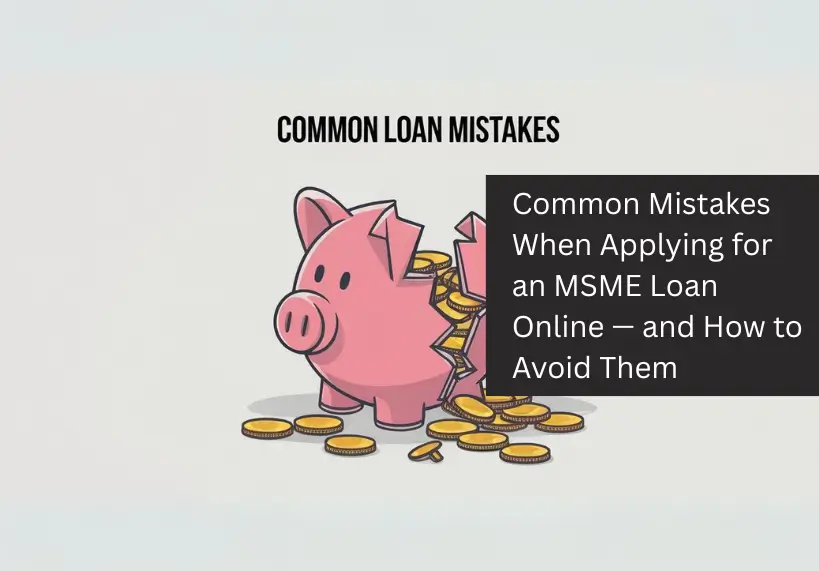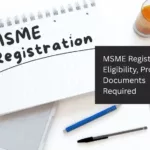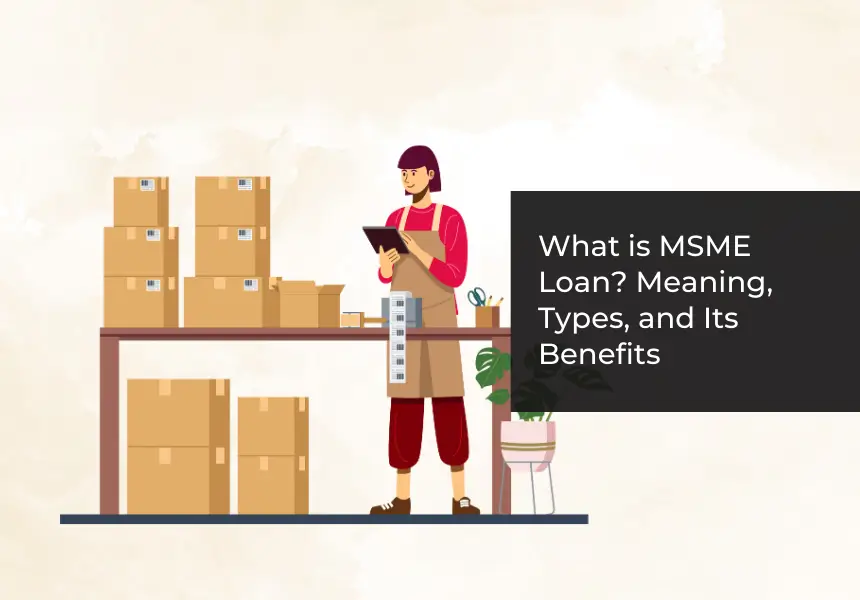
Securing a loan is a crucial milestone for any Micro, Small, or Medium Enterprise (MSME) looking to grow, expand operations, or manage working capital. With the rise of digital lending platforms, applying for an MSME loan online has never been easier.
But even with increased convenience, many business owners continue to make avoidable mistakes that delay approvals, impact loan amounts, or lead to rejections.
If you’re a small business owner planning to apply for a loan, this guide outlines the most common mistakes people make when applying for an MSME loan online — and how to avoid them.
1. Not Checking MSME Eligibility Requirements
Each lender sets its own eligibility criteria, which may include factors like business vintage, turnover, credit score, and registration status (such as Udyam Registration).
Why it matters: Not meeting eligibility often results in automatic rejection, affecting your credit inquiry history.
How to avoid it: – Review the lender’s eligibility checklist. – Ensure your business is properly registered under the MSME loan scheme. – Maintain a clean financial record and active business operations for at least 1–2 years.
2. Incomplete or Incorrect Documentation
Incorrect or outdated documents are a leading cause of delays or outright rejection.
Common issues: – Name mismatches across documents – Expired GST or trade licenses – Incomplete address or missing signatures
How to avoid it: – Double-check PAN, Aadhaar, business registration, and GST details. – Maintain a ready folder of up-to-date documents. – Use digital tools to verify document consistency before upload.
3. Ignoring Your Credit Score
Both your personal and business credit scores play a major role in loan approvals. Many applicants neglect to check this before applying.
How to avoid it:
- Check your CIBIL score regularly.
- Repay existing EMIs and credit card bills on time.
- Avoid applying to multiple lenders at once, as it triggers hard inquiries.
Explore: Personal loan options for borrowers with a strong credit history.
4. Requesting an Unrealistic Loan Amount
Asking for a higher-than-needed loan can raise red flags. Lenders evaluate your repayment capacity based on turnover, profitability, and existing liabilities.
How to avoid it: – Calculate your actual business requirement. – Back it up with data: working capital needs, asset purchase, expansion, etc. – Create a repayment strategy.
5. Submitting a Generic Business Plan
A vague or outdated business plan reduces lender confidence. It should clearly outline how the loan will be utilized and how the business will generate returns.
How to avoid it: – Update your business plan before applying. – Connect the loan requirement with business outcomes. – Include market analysis, sales forecasts, and ROI estimates.
6. Overlooking Fintech and NBFC Options
Many MSME owners limit their options to traditional banks, missing out on faster and more flexible digital lending platforms.
Why fintech lenders matter: – Minimal paperwork – Quick disbursals – Customised products
Example: LoanTap’s MSME loan offers collateral-free financing with simplified documentation.
7. Not Verifying Repayment Terms & Conditions
Many business owners skip reading the fine print. Prepayment penalties, processing fees, and interest reset clauses can cause surprises.
How to avoid it: – Read the full loan agreement. – Ask about hidden fees, EMI flexibility, and tenure. – Use EMI calculators to forecast repayment.
8. Not Demonstrating Business Cash Flow
Lenders need to see consistent revenue to approve your application. If your bank statements don’t reflect regular income, approvals may be affected.
How to avoid it: – Submit 6–12 months of bank statements. – Emphasize contracts, invoices, or steady client payments. – Highlight retained earnings.
9. Not Using Government-Backed MSME Schemes
The Government of India offers several schemes for MSMEs such as CGTMSE, PMEGP, and Stand-Up India.
How to avoid it: – Visit the Udyam Registration portal and register your business. – Stay informed about scheme updates. – Choose lenders who facilitate scheme-based financing.
10. Being Vague About Loan Purpose
Generic statements like “business expansion” don’t inspire lender confidence. Be specific about the usage.
How to avoid it: – Clearly outline how funds will be used: hiring, inventory, new location, etc. – Link the purpose with expected business growth. – Provide projections.
Conclusion
Online MSME loan applications are efficient and time-saving, but only when approached correctly. Avoiding basic mistakes can improve your chances of approval and better terms. Choosing the right lender is equally important.
LoanTap offers digital-first business loans that are ideal for MSMEs looking for speed, simplicity, and flexibility. With minimal documentation and quick turnaround, it’s a strong choice for small business financing.
FAQs
1. What are the documents needed for MSME loan applications?
PAN, Aadhaar, Udyam Registration, GST certificate, bank statements (6-12 months), and financial statements.
2. Can I get an MSME loan without collateral?
Yes, many lenders including LoanTap offer collateral-free MSME loans.
3. How long does it take to get a loan approved online?
Most fintech platforms approve loans within 24–72 hours of eligibility and documents are in place.
4. What is the minimum turnover for MSME loan eligibility?
This varies by lender, but usually ranges from ₹5–10 lakh annually.
5. Is Udyam registration mandatory?
It’s not mandatory with all lenders but strongly recommended for formal recognition and scheme access.








